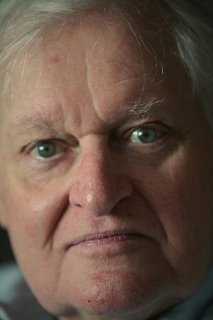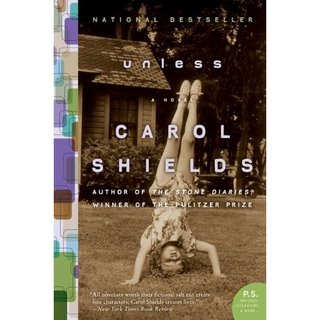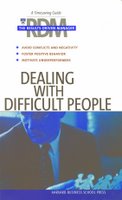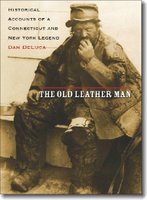
John Ashbery's poems were required reading in a Modern Poetry class I had my sophomore year in college. I took the class because it fulfilled a requirement and I thought for a journalism major/English minor, poetry would be just so easy. Such naivety! I'd never heard of Ashbery before, but never forgot his talents since.
An apropos excerpt from Ashbery's "Soonest Mended," from The Double Dream of Spring:
None of us ever graduates from college,
For time is an emulsion, and probably thinking not to grow up
Is the brightest kind of maturity for us, right now at any rate.
John Ashbery - movie fan and canonical poet
By HILLEL ITALIE
AP National Writer
NEW YORK — White-haired and round-faced, with a kind smile and a wry, modest air, the award-winning poet stands before hundreds on a cloudy fall night.
John Ashbery first appeared at Manhattan's 92nd Street Y as an emerging writer more than 50 years ago. He is now 81, limps to the podium and takes deep breaths between each poem. But he is neither solemn nor sad. As he recites from an early work called "He," the words seem to slip out the side of his mouth, as if each line were a wisecrack, a naughty aside whispered during a dull cocktail party.
____
He wears a question in his left eye.
He dislikes the police but will associate with them.
He will demand something not on the menu.
He is invisible to the eyes of beauty and culture.
____
Ashbery is the first living poet to have a full volume of his work released by Library of America, publishing's unofficial canon maker, and his reading is an hourlong summary of poems inspired by dreams, pronouns, Richard Strauss, and Peaches and Herb's "Reunited." He concludes with some recent material, including "They," consisting entirely of movie titles, from "They Were Expendable" to "They Knew What They Wanted."
The new poems, he explains, are to "prove that I'm still writing them."
First published in 1957, obscure for many years, he was raised to the very heights in 1976 with "Self-Portrait in a Convex Mirror," winner of publishing's three biggest honors: the Pulitzer Prize, the National Book Award and the National Book Critics Circle prize. Critic Harold Bloom, one of the poet's champions, has proclaimed that we live in "the Age of Ashbery."
His work, like a mountain top, is easier to take in from a distance than to actually set foot upon. His poems have baffled as often as they have inspired, ignoring grammar, narrative and, at times, logic of any kind. But admirers say the beauty isn't so much in the reading as in the rereading, aloud, when the music of the words reveals the message, how "the conscious is to you what is known/The unknowable gets to be known."
"He has enlarged the vocabulary of American poetry," says critic Helen Vendler. "He does not let any conventions of expression stand in his way."
Author of numerous poetry collections and plays, along with fiction and essays about art, Ashbery writes of love, music, the seasons, the city, the country and popular culture. He is surely the greatest poet ever to compose a hymn to Warren Harding, the brief "Qualm," in which he forgives the late, scandalized president as not "a bad egg/just weak/He loved women and Ohio."
Ashbery does not identify himself as a storyteller — or philosopher — and does not claim to "mean" anything. But there has been a theme in his work since his mid-20s: the passage of time, the tricks of memory and how the present continuously changes, or erases, the meaning of the past.
So he may boast about "strutted opinion doomed to wilt in oblivion," even as he acknowledges that "I grew/To feel I was beyond criticism, until I flew/Those few paces from the best." He notes, in "The Skaters": "The carnivorous way of these lines is to devour their own nature, leaving/Nothing but a bitter impression of absence." In "A Wave," he considers death and asks, "As children leaving school at four in the afternoon, can we/Hold our heads up and face the night's homework?"
Ashbery was born in Rochester, N.Y., in 1927 and grew up on an apple farm in the nearby village of Sodus, where it snowed often enough to inspire his first poem, "The Battle," written at age 8 and a fantasy about a fight between bunnies and snowflakes. He was so satisfied with the poem, that he didn't write another until high school.
Meanwhile, he found new meaning in life, or Life. An article in Life magazine about a surrealist exhibit at the Museum of Modern Art so impressed him that he kept rereading it for years. His mind broadened further at Harvard University, where he met fellow poet and longtime comrade, Kenneth Koch, along with Richard Wilbur, Donald Hall, Robert Bly, Frank O'Hara and Robert Creeley.
"Kenneth Koch and I especially saw a lot of each other," Ashbery said in an interview in the living room of his Manhattan apartment, a few days before the reading. "We talked a lot about poetry and helped shape each other's ideas about it."
His first book, "Some Trees," was a relatively conventional collection that came out in 1956, with a preface from W.H. Auden and the praise of O'Hara, who likened Ashbery to Wallace Stevens. But in 1962, he unleashed the truly abstract, collagist "The Tennis Court Oath," with such lines as, "You are freed/including barrels/heads of the swan/forestry/the night and stars fork."
Cracked critic John Simon: "Mr. Ashbery has perfected his verse to the point where it never deviates into ... sensibility, sensuality or sentences." Even Ashbery now says he went too far.
"Some (poems) were written in a period of almost desperation, when I was living France, had nobody to read my poems or give me an opinion on them. And at the same time, I fell out of touch with American speech, which is really the kind of fountainhead of my poetry," he says.
"I actually went through a period after 'The Tennis Court Oath' wondering whether I was really going to go on writing poetry, since nobody seemed interested in it. And then I must have said to myself, 'Well, this is what I enjoy. I might as well go on doing it, since I'm not going to get the same pleasure anywhere else.'"
Ashbery was never part of the reigning poetry fad, the Beats, but he was a member of an identified movement, joined with friends O'Hara and Koch as "New York Poets," although Ashbery would joke that all they had in common was living in New York.
He says a turning point came with his collection, "Rivers and Mountains," published in 1966. For years, he had been pulling apart the art of verse, now he would stitch it back. The evolution continued with "Self-Portrait in a Convex Mirror." He usually works quickly and rarely revises, accumulating words in his mind so they stream onto the page. But for "Self-Portrait," he found himself struggling, having to set work aside and then come back to it.
"I had very low expectations," he says. "The poems cost me much more effort than anything I had written before."
Ashbery's burden seemed to remove some weight off the readers. David Lehman, a poet and critic who has written at length about Ashbery, says "Convex Mirror" was just accessible enough to please general poetry fans and unconventional enough for specialists. He believes Ashbery's influence continues to grow as the world itself becomes harder to understand, and more like an Ashbery poem.
"It seems as though almost from the start he's been ahead of everyone else," Lehman says. "A poem he wrote in 1980 may have baffled the reader who read it then. But 10 years later, the poem suddenly seems very clear, as though he's anticipated something that's happened."
Ashbery remains a prime source for young poets, including Mark Bibbins, whose first collection, "Sky Lounge," came out in 2003. The 40-year-old Bibbins remembers reading Ashbery, "on a whim," as an undergraduate at Hunter College.
"I experienced the combined jolts of discovery and recognition that great art provides," says Bibbins, who teaches poetry at the New School in Manhattan. "The poems felt so strange and expansive, yet at the same time welcoming and intimate — contradictions one feels all the time in New York City, where John and I both live.
"He has remained relevant by being irreverent and wise, by keeping time with time."
Poetry, Ashbery once wrote, means "living in a state of alert and being ready to change your mind." Ashbery's style is as boundless as the content. He writes short poems, epics, nursery rhyme, rhyming couplets and free verse, formal lines such "A perjorative lover, alone and palely loitering," or, neighborly talk, like, "Honey, it's all Greek to me."
Ashbery says he just reread an essay by Auden in which the poet called the Oxford English Dictionary "his most treasured reading" and praised the language as large, yet lenient, noting how Shakespeare would invent new words simply by turning a verb into a noun or an adjective into a verb.
Ashbery is a longtime breaker of rules, but he has so far honored the boundaries of his own name. Ashbery remains just Ashbery, a proper noun, the last name of one of the world's most admired poets. But why not pretend that the poet is an adjective, Ashbery-like, or a verb, "to Ashbery." The poet even offers a definition.
"To confuse the hell out of people," he says.
Labels: John Ashbery, poetry

 RSS
RSS





